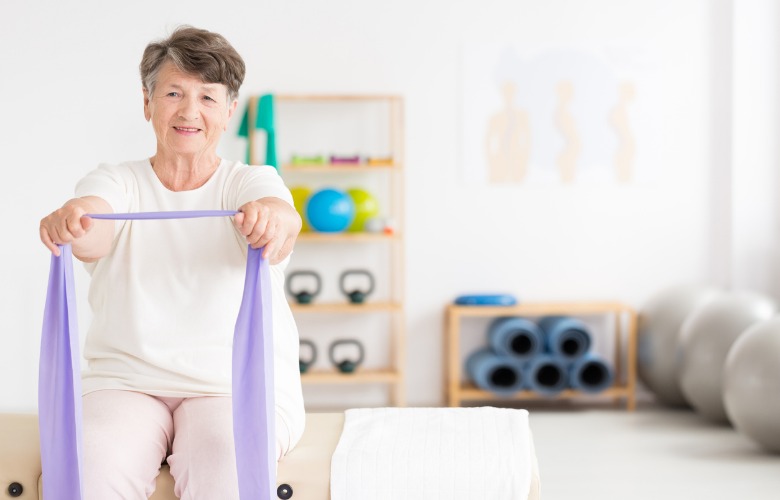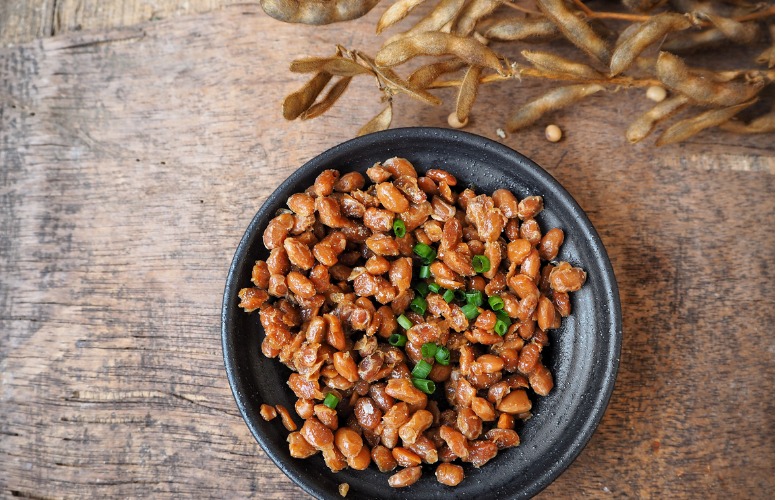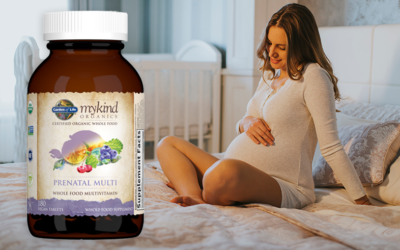Vitamin K2 and Osteoporosis
Bones are remodeled through the actions of 2 different cells. Osteoclasts will remove a small amount of bone and then die. Osteoblasts will then go to that area and build new bone to replace what the osteoclasts removed (2). This process is regulated through hormones like calcitonin, parathyroid hormone, vitamin D, estrogen (in women), and testosterone (in men) (1). As you grow, more new bone is added than old bone is being removed, so your bones not only grow but also become denser (1). The skeletal mass is at its highest point sometime between 18 and 25 years old (2). At some point after age 20, you start to have more old bone being removed than new bone added, which can lead to bone loss. (1). For many people, this can be minimized through eating healthy, exercising, and avoiding tobacco and excessive alcohol drinking (1). Large amounts of bone loss can lead to osteoporosis, which we’ll discuss later.
How to keep your bones healthy?
To build and maintain healthy bones, eating a healthy diet is important. This involves eating enough calories and also being conscious of vitamins and minerals. You probably already know that calcium and vitamin D are essential to your bones, because they promote bone synthesis(2). You may not know that vitamin K2 is being studied for its role in keeping bones healthy too.
What is Vitamin K2?
There are 2 forms of vitamin K. Vitamin K1, phylloquinone, is made by plants, and we get it from our diets. Vitamin K2 is also referred to as menaquinones. It can be made by the healthy bacteria in your gut(3). Some of the vitamin K2 produced by your intestinal bacteria are stored in your liver (4). Vitamin K2 can also come from fermented foods and animal products. Menaquinones can have different lengths based on the number of 5-carbon units along the molecule. A menaquinone with two 5-carbon units would be written as MK-2, and there can be as many as 14 carbon units (3). The small intestine absorbs the vitamin K2 that you get from your diet, and you make vitamin K2 in your colon(3).
Vitamin K2 can be found in fish, liver, meat, eggs, cereals, and Natto (a Japanese fermented soybean dish). (5) It is also found in some cheeses and curds(3). Vitamin K2 is sold as capsules or tablets at many stores.
Vitamin K is able to bind calcium ions. This is essential for activating clotting factors. Vitamin K is important for the γ-carboxylation process in building bones. Basically, this γ-carboxylation is needed to for osteocalcin (OC) to bind calcium and improve the bone’s structural integrity(3)(6). OC that doesn’t go through γ-carboxylation is uc-OC (undercarboxylated osteocalcin) and cannot be incorporated into the bone(7). This means that having more uc-OC is generally considered to be worse and having increased OC is an improvement(8). Several studies have found that having more vitamin K in your diet may be linked with lower uc-OC (9)
Animal and cell studies have found vitamin K2 can increase bone mass and reducing fractures. It helps maintain the number of osteoblast cells that build bone(7). Some studies have found that bone mass increases with the amount of vitamin K in your plasma, and fracture risk goes down with higher vitamin K intakes (9).

What is osteoporosis?
In osteoporosis, osteoblasts don’t repair the bone at the same levels the osteoclasts have resorbed the bone (2). In other words, more bone is being removed than being replaced(1). According to the National Osteoporosis Foundation, there are about 10 million Americans with osteoporosis and 43 million Americans with low bone density who are at-risk for osteoporosis (10). This results in approximately 2 million fractures and $19 billion in health care costs per year in the US. The number of fractures and health care costs attributed to osteoporosis is expected to rise in the future (7).
People with osteoporosis get bone fractures because of their bone fragility. Absolute mineral bone density (BMD) is used to assess osteoporosis in patients (7). Fracture risk is dependent on absolute mineral bone density. A healthy young adult’s bone density maybe around 1.4 g/cm2 , but someone with a BMD below 1 g/cm2 is at increased risk for fractures(2). The most common fractures for people with osteoporosis are vertebra, hip, and forearm(7).
In addition to the slow bone loss all people go through after turning 40, women begin losing more bone loss because of lowered estrogen(2). An estrogen deficiency leads to more bone turnover, more osteoclasts, and more trabecular bone loss (11). Women generally go through menopause between 45 and 55 years old. During the first 4 to eight years, they can rapidly lose bone tissue. At age 65, women and men tend to lose bone tissue at similar rates(1).
Smoking, drinking alcohol, physical inactivity, being underweight, the use of anticonvulsant and anticoagulant drugs, and certain genotypes can all contribute to osteoporosis. If you have Cushing disease, hyperthyroidism, hyperparathyroidism, hypogonadism, or malabsorption, this can also increase your risk of osteoporosis (2). Additionally, someone who didn’t reach their maximum peak bone mass during their first two decades of life is more likely to develop osteoporosis(1).
Currently, there isn’t an established optimal drug therapy for treating people with osteoporosis nor a drug to prevent it (7). Some drugs have been shown to be useful like bisphosphonate, parathyroid hormone, raloxifene, nasal calcitonin, and strontium ranelate(7). Preventing and treating osteoporosis requires more research, especially in light of how many people are affected by this disease.
What research is being done on Vitamin K2?
Vitamin K2 is used in Japan in osteoporosis treatment, but vitamin K has not been approved to be used for the prevention or treatment of osteoporosis for the U.S. Food and Drug Administration(3). There have been many studies showing the positive effects of vitamin K2 in Japan (7). Most have focused on Japanese postmenopausal women (3). There are inconsistent results between Japanese and European-American studies, so more studies need to be done to demonstrate vitamin K2 promotes bone health for all demographics(8).
Research on Vitamin K2 and Postmenopausal Women
Many studies focus on postmenopausal women, and some show that vitamin K2 promotes various aspects of bone health. One meta-analysis of the scientific studies on vitamin K2 in postmenopausal women was done including women with and without osteoporosis. They found that postmenopausal women without osteoporosis taking vitamin K2 maintained their vertebral BMD and forearm BMD, but they didn’t see a difference for the women without osteoporosis. There was a decrease of uc-OC and an increase of OC, which is a sign of improved bone metabolism. The women taking vitamin K2 had a lower risk of fractures than women who weren’t taking vitamin K2 (7).
Another study where postmenopausal women were given a form of vitamin K2 (MK-4) along with alendronate had improvements in uc-OC, OC, and BMD compared to women who only took alendronate (8). A study in the Netherlands also found that MK-4 helped postmenopausal women maintain bone strength over 3 years compared to women who took a placebo(8). This study didn’t see an improvement for BMD, but they saw better compression strength, impact strength, and femoral neck width (8). A study focused on MK-7 looked at height loss in healthy postmenopausal women over three years. After 2 and 3 years, there was less height loss among the women who took MK-7 than the women in the control group(9).
Research on Vitamin K2 and Bone Quality
A metanalysis based on 19 trials suggested that vitamin K2 supplementation plays a positive role on lumbar spine BMD in osteoporosis patients. Among the people without osteoporosis, the people taking vitamin K2 and the people who took control had similar lumbar spine BMD changes (9).
A few studies have focused on how vitamin K2 affects bone quality. A study with rats found that those treated with MK-4 had higher trabecular volume fraction and thickness. A study with postmenopausal women found that vitamin K supplements taken with teriparatide treatment (an osteoporosis treatment drug) had improved BMD and bone strength (9).

Research on Natto in Diet
Natto, cooked fermented soybeans, is popular in Japan and rich in MK-7. A study of Japanese women ages 20-79 found that natto was positively associated with hip BMD in postmenopausal women. After three years, the women who consumed natto daily had significantly less femoral neck BMD loss than the women who did not eat natto (3). For premenopausal women, they found no association. A study on Japanese men who were 65 years or older found that the men who had natto every day had higher hip and femoral neck BMD than the men who had natto less than once per week. This suggests that vitamin K2 is helpful for older men and women. However, this observational study acknowledges that other nutrients beneficial for bone health are being better absorbed by eating natto, and these positive bone effects may have been affected by the other nutrients, not just natto(3). In one trial, menopausal women took MK-7 for three years, and there was less bone loss at the femoral neck but not other parts of the skeleton (3). Larger randomized controlled studies need to be done to better understand the effects of menaquinones in bone health.
Research on Fracture Risk and Vitamin K2
Among elderly northern Europeans, elderly Asians, and the Japanese general population, scientists have seen an association between low plasma vitamin K concentration and a higher risk of fracture. Three observational studies found that people with the lowest vitamin K intake had a higher risk of hip fractures than the people who had higher vitamin K intakes, but a different cross-sectional study found no correlation. Based on these observational studies, trials have been done, but there haven’t been many trials evaluating vitamin K supplement’s effects on fracture risk. In one trial, some women took a vitamin K supplement. After 2 and 4 years, fewer women taking more vitamin K suffered fractures compared to the control group(9). Two observational epidemiology studies, the Framingham Study and the Nurses’ Health Study found a negative association between how much vitamin K they took into their bodies and the incidence of hip fractures(2). This suggests that vitamin K may play a role in keeping bones healthy among the elderly. A meta-analysis with 700 patients found that MK4 was linked with lower incident fractures. More studies need to be done to confirm how vitamin K2 may reduce fracture risk for those with osteoporosis (8).
Although some observational studies suggest that vitamin K may be associated with bone health, more studies with larger sample sizes and less heterogeneous populations are needed to better understand how vitamin K affects various aspects of bone health in different groups of people. Conducting trials among women of different ethnicities could help us understand osteoporosis treatment better and if vitamin K2 could be best used on its own or with currently available treatments. Additionally, a more comprehensive understanding of how other parts of the diet work together to affect bone strength is needed (9)
Safety
You should always talk with your health care provider before beginning to take new supplements. There hasn’t been evidence of toxicity with taking 45 mg of vitamin K2 daily (8). Some people may experience minor adverse reactions such as nausea, mild abdominal pain, or itching (7). People who take anticoagulant drugs like warfarin should avoid large fluctuations in their vitamin K intake. It is especially important for anyone on these medications to discuss changes in their vitamin K intake, whether it is through diet or supplements, with their physician.(3)
Taking large doses of vitamin A can interfere with vitamin K absorption. Excess vitamin E may inhibit vitamin K’s activity. Additionally, anticonvulsants, anti-tuberculosis drugs, antibiotics, amiodarone, and cholesterol-lowering medications can affect how vitamin K is absorbed and used in the body. (3)
References
1. “What Is Bone?” National Institutes of Health, U.S. Department of Health and Human Services, May 2015, www.bones.nih.gov/health-info/bone/bone-health/what-is-bone.
2. Olson, Robert E. “Osteoporosis and Vitamin K Intake.” The American Journal of Clinical Nutrition, vol. 71, no. 5, May 2000, pp. 1031–32. academic.oup.com, doi:10.1093/ajcn/71.5.1031.
3. “Vitamin K.” Linus Pauling Institute, 22 Apr. 2014, http://lpi.oregonstate.edu/mic/vitamins/vitamin-K.
4. Flore, R., et al. “Something More to Say about Calcium Homeostasis: The Role of Vitamin K2 in Vascular Calcification and Osteoporosis.” European Review for Medical and Pharmacological Sciences, vol. 17, no. 18, Sept. 2013, pp. 2433–40.
5. Vitamin K – New Research Shows That This ‘Forgotten’ Vitamin May Be Good for Your Bone Health | International Osteoporosis Foundation. https://www.iofbonehealth.org/news/vitamin-k-may-be-good-for-your-bone-health. Accessed 28 June 2018.
6. Iwamoto, Jun. “Vitamin K2 Therapy for Postmenopausal Osteoporosis.” Nutrients, vol. 6, no. 5, May 2014, pp. 1971–80. PubMed Central, doi:10.3390/nu6051971.
7. Huang, Z. B., et al. “Does Vitamin K2 Play a Role in the Prevention and Treatment of Osteoporosis for Postmenopausal Women: A Meta-Analysis of Randomized Controlled Trials.” Osteoporosis International: A Journal Established as Result of Cooperation between the European Foundation for Osteoporosis and the National Osteoporosis Foundation of the USA, vol. 26, no. 3, Mar. 2015, pp. 1175–86. PubMed, doi:10.1007/s00198-014-2989-6.
8. Guralp, Onur, and Cemal Tamer Erel. “Effects of Vitamin K in Postmenopausal Women: Mini Review.” Maturitas, vol. 77, no. 3, Mar. 2014, pp. 294–99. PubMed, doi:10.1016/j.maturitas.2013.11.002.
9. Palermo, Andrea, et al. “Vitamin K and Osteoporosis: Myth or Reality?” Metabolism, vol. 70, Feb. 2017. ResearchGate, doi:10.1016/j.metabol.2017.01.032.
10. “54 Million Americans Affected by Osteoporosis and Low Bone Mass.” National Osteoporosis Foundation, 2 June 2014, www.nof.org/news/54-million-americans-affected-by-osteoporosis-and-low-bone-mass/.
11. Plaza, Steven M., and Davis W. Lamson. “Vitamin K2 in Bone Metabolism and Osteoporosis.” Alternative Medicine Review: A Journal of Clinical Therapeutic, vol. 10, no. 1, Mar. 2005, pp. 24–35.
12. Hendrick, Bill. “Vitamin K: No Help for Bone Density.” WebMD, https://www.webmd.com/osteoporosis/news/20081013/vitamin-k-no-help-for-bone-density. Accessed 28 June 2018.
13. “Finding New Health Benefits for Vitamin K.” National Osteoporosis Foundation, https://www.nof.org/news/finding-new-health-benefits-for-vitamin-k/ Accessed 28 June 2018.



